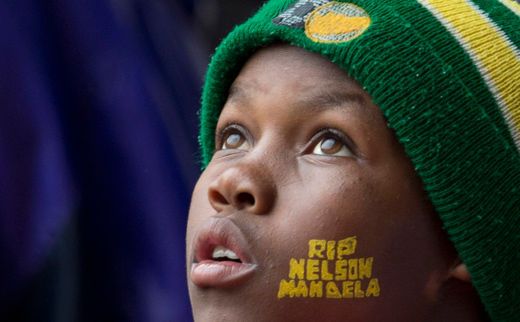
The South African Communist Party’s Special National Congress, held July 7 – 11 in Soweto, Johannesburg, took stock of a range of problems besetting South Africa’s young democracy and efforts to tackle the legacies of the colonial and apartheid past.
The SACP is a tripartite alliance partner of the ruling African National Congress (ANC) and the Confederation of South African Trade Unions (COSATU). The Alliance held a summit meeting just before the SACP congress in part to examine the impacts of a range of problems involving the ANC and COSATU.
COSATU has been involved in bitter internal divisions, in part rooted in antio-labor attacks against the union movement. The National Union of Metal Workers and its general secretary, Zwelinzima Vavi, were expelled.
The declaration of the SACP Congress noted, “In our present reality, the SACP is the most stable and ideologically coherent formation within the Alliance. This is a time when the ANC is acknowledging many challenges related to incumbency and the influence of money on internal democracy… [and]… the unrelenting capitalist offensive against COSATU coincides with serious challenges to its unity and strength.”
The strength of the SACP is evident in its mushrooming membership numbers of 35,000 a year in the last two years to its current high of 230,000. It is the second largest political formation, in terms of members, after the ANC. But, as its general secretary Blade Nzimande pointed out in his political report to the congress, the party “is itself not immune to the dangers of factionalism, incumbency, careerism and money politics.”
The main aim of the party gathering was to address this situation in terms of other crosscutting developments. Mainly, these are the more aggressive stance of monopoly capital in South Africa and internationally, and the impact it has on South Africa’s National Democratic Revolution (NDR) – the overarching transformative strategy of the ANC and its allies.
“It is no secret that we are confronting a very challenging period in our national democratic revolution with risks, threats but also important opportunities and responsibilities,” said Nzimande. His report to the Congress detailed the vast problems confronting South Africa in the face not only of a global economy under increasingly desperate imperialist hegemony but of more intense attacks in South Africa on the left by right-wing and populist semi-fascist formations.
In one area, the mainstream media, there has been a robust offensive by the Naspers media group, resulting in the brutal and well-funded corporate capture of the public broadcaster, the SABC, and its transformation from a vehicle serving all South Africans into one for the middle class and rich. Naspers is also using its vast resources to destroy the country’s independent local newspaper operators. This is all part of an offensive designed to set the course of political and social developments in the country and keep it safe for corporate domination.
The main business of the Congress was to formulate resolutions in five main areas: party building, economic transformation, the workplace, the battle of ideas, and the upcoming 2016 local government elections. The work resulted in a hefty register of resolutions that will be taken to the party’s provinces, districts and branches to be carried out.
But much of the discussion of the Congress focused on reassessment and self-criticism concerning the direction of the transformation attempted since 1994. This needs some explanation.
Going to the Root
Toward the end of last year the SACP published a discussion document, Going to the Root, which aims to open up debate in the party, the broader alliance movement and the wider public on the heavy problems that persist in the country despite just over 20 years of democratic reconstruction.
The main problem the party identifies is the deepening of the triple crises that have long afflicted the majority of South Africans – unemployment, poverty and inequality, all of which are heavily racialized according to the raw legacies of the long colonial and apartheid period. The question Going to the Root seeks to answer is why, despite massive redistribution programmes over the past 20 years, these three disastrous trends continue.
For those of us on the receiving end of the sketchy mainstream media coverage of events in South Africa, the news is unremittingly bad: striking mine workers shot down by cops at Marikana, all-pervasive corruption in government, protests in poor areas against lack of service delivery, upheavals in parliament instigated by new ‘radicals’ fed up with government cronyism, and violent xenophobia directed at migrants from other parts of Africa.
And, in the midst of all this, plummeting ratings issued by various international agencies, covering everything from South Africa’s deteriorating economic viability due to bad labor relations, hopeless education performance, lack of transparency and accountability and general bad governance.
This mainstream, largely Western, narrative has been so powerful as to convince many, even progressives of various hues, that there is nothing else going on in South Africa. As a result, few people outside the country – and a good many inside it – have any idea of the achievements made by the African National Congress in government since 1994.
Some of these post-Apartheid successes easily eclipse those of progressive left governments in South America, and yet South Africa is never characterised in the same terms as those governments. One reason is that, if it were, it would challenge the dominant Western corporate and government conventional wisdom of South Africa as the focal point of Western interests in Africa. And it is this conventional wisdom, a fairly coherent neo-liberal offensive, which we find replicated in the ways South Africa is viewed and gets depicted.
As it is, nothing is reported about the creation of a welfare program providing monthly state allowances for 16 million people, and including benefits for housing, disability and sickness, child support and income support. When the democratic government took office in 1994 there were just three million South Africans receiving rudimentary welfare grants.
Nothing gets reported about the 3.3 million free houses built for people in the poorest areas, and benefitting some 16 million people. What does get reported is that some of this government housing has been substandard due to corrupt cost- cutting by private building contractors benefitting from local government tenders. But then again what doesn’t get reported is that government is now ensuring that all substandard free housing is replaced or renovated.
Nothing gets reported about the electrification program providing seven million household electricity connections since 1996. Contrast this to the achievement of all the apartheid administrations put together, which in half a century electrified just five million households, and just a few in poor areas.
Nothing gets reported about the vast overhaul of the education system, which for the black majority has meant the replacement of crude rote learning, sufficient only for unskilled employment, by multidiscipline curricula leading to university level education. What’s more, nine million pupils in 20,000 schools across the country now benefit from free school meals.
And nothing gets reported about the free distribution and installation of solar water heaters to poor households, allowing people to generate their own hot water.
All these programs are works in progress and are continuing apace. They are, as the SACP, notes in its Going to the Root discussion paper, “all part of the ‘good news story’…the most important factor in the continued overwhelming majority electoral support achieved by our movement.”
But, the SACP points out, “since we are dealing with a real life process and not an abstract theory, this massive redistributive process underway since 1994 has often been uneven.” This means that targets have been missed, the quality of delivery has been poor, and maintenance of new infrastructure gets neglected.
Demand is overwhelming
Another deeper problem is that the scale of demand overwhelms the scope for delivery to provide poor communities with services and amenities. And with crisis levels of poverty, unemployment and inequality not diminishing but worsening, the demand for services is only increasing.
The compounded problems the situation generates makes the ANC government an easy target of neo-liberal attacks to, as the SACP puts it, “sow popular demoralization and a lack of belief in the capacity of popular forces and the democratic state to advance development.”
In other words, by telling just one half of the story, the negative one, the opponents of progressive change in South Africa are able to cast the ANC government, and its alliance partners – the SACP and Confederation of South African Trade Unions in a completely unfavorable light. And so, while these adversaries are all too keen to spotlight public sector corruption they are silent about the intense fight-back against corruption or about the staggering scale of private sector corruption.
But the SACP goes further, and places the country’s current problems in the context of insufficient structural transformation, particularly of the productive economy, since 1994. The ANC took this self-critical approach at its last National Conference, held in 2012, and called for a “second radical phase of the national democratic revolution” – the first being the fundamental break with the past that culminated in the 1994 democratic elections.
The thinking behind the “second phase” is that while the negotiations led to the democratic breakthrough of 1994, this advance did not create a bridgehead for a radical social-economic transformation agenda. While the redistribution of surplus, largely through the fiscus, has clocked up successes, it has been conceptualized as a top-down state delivery process, and is generated from an unchanged productive economy and growth path fixated on GDP.
The result is an essentially neo-liberal, trickle-down development notion, whereby the “cake” must get bigger for everyone – particularly the working class and the poor – to have a share of it. This course of development has essentially left monopoly capital unchallenged and in the lead.
From this position it has had a free hand in aggressively restructuring production – including, as we see with Naspers, information – shifting investments from manufacturing to speculative and non-productive activities like financial services and real estate and in the process fragmenting organised labor through casualization, informalisation, labour brokering and retrenchments. To make matters worse it has presided over massive capital flight out of the country and tax evasion.
In this situation, the SACP argues, the state’s redistributive successes have been muted by turning the mass popular base of the ANC and the Alliance into recipients, beneficiaries and clients of services that are “delivered.” Instead of being protagonists of transformation, the mass base has been pushed into passivity, which tends to rebound against government when it fails to “deliver.”
The ANC government, which includes strong input from the alliance partners at national and local level, has moved swiftly since the 2012 National Conference to create the bases for a new growth and development path through a range of policies and programmes.
They include the New Growth Path strategy for expanding jobs and development drivers in 13 key sites of production, the Industrial Policy Action Plan for state-led reindustrialization, the National Infrastructure Plan and various smaller programes, including the development of cooperatives and SMMEs. Abundant information on all of these macro policy plans is easily available from South African government websites.
The key point made by the SACP at its Congress was that despite the positive bases for change created by these policies, they will only succeed to change the social and economic landscape in South Africa if they are carried through by more mobilized and politically engaged urban and rural poor communities.
This is the decisive task confronting the Party and the Alliance as they wrestle self-critically with the ever-pertiment question, “What is to be done?”
Photo: A boy with “Rest In Peace Nelson Mandela” painted on his face looks up to the skies during the memorial service for former South African president Nelson Mandela at the FNB Stadium in Soweto, near Johannesburg, South Africa. | Peter Dejong/AP












Comments